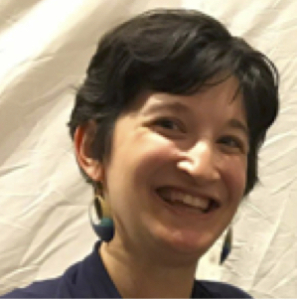A Paradigm for Digital Belonging
During the pandemic, many congregations moved some or all of their programming online. People joined online services and classes from all over. Congregations that see the benefits of this wider access are asking how to continue to reach a wider audience while still serving local needs. Could we offer digital membership to those who do not live locally, or for another reason cannot come into the synagogue’s building?
It’s important for digital participants to feel that their presence matters. They need to feel included, and active participation needs to be possible. Watching remotely (as though the service were a TV show) will not sustain a desire for longterm connection.
Before offering digital membership, consider whether your community will stay in digital space indefinitely. Is that something your community is committed to? During Covid, having all programming online makes sense, but what happens in one year, or in five if the digital space becomes less of a focus? Will services, classes, holidays and rituals always be hybrid, or will the online component start to fizzle out in preference for focusing on the people in the room?

A slide designed to signal a pause in screenshare so onsite and offsite participants can see each other. Courtesy of Rachel Barenblat; if you want to incorporate the slide into your own slide deck, it is here on google slides.
You may also need to examine your membership structure, and what messages that structure affirms about the meaning of membership. Does your membership structure create a feeling of fee-for-service, or is there a sense of belonging and mutual responsibility?
Belonging and commitment are essential to meaningful connection. For people to choose a digital membership, they must feel part of the community. Can you create opportunities for building relationships, just as you would for congregants coming in the door? Can you offer digital honors at services – asking an online member to chant or read, or simply repeating out loud the mi sheberach and yahrzeit names they write in the chat box on Zoom? What can you do with break-out rooms, small-group discussions, hevruta learning? The key is to equalize onsite and online experience, and to allow for real participation and sharing.
Rabbi Lex Rofeberg points out that online is its own kind of “place,” and that online spaces can be valuable – not just to enhance offline experiences, but as their own experiences. (Transcending ‘Digital Resources,’ Embracing Digital Judaism”) Perhaps there are times when it is appropriate for all to gather online, so everyone can see each other and participate equally.
Distinguish between digital-only membership for people who live far away, and online options for local congregants. For digital members, there is no opportunity for physical contact. How does that change what we offer and how we offer it?
I am purposefully avoiding the terms “virtual” and “in-person.” If a congregation is going to successfully embrace a digital membership structure, they must adopt what Rabbi Lex Rofeberg calls a “digital consciousness,” trusting that digital spaces are real and that connections formed or nourished there are real.
Digital membership will pose challenges, including the challenge of multiple modalities of experience. If all are together online, or all are socially distanced on the synagogue patio, all have an equal opportunity of experience. Hybrid spaces are much more difficult, and connection between the two spaces is much harder.
It is easy to unintentionally separate attendees into an “online” group and an “onsite” group, which could prove alienating. To lessen this risk, consider shifting space intentionally, even choosing to be all-digital sometimes so that online participants’ experience is centered.
This moment also challenges us to thoughtfully plan a new style specifically for hybrid davenen and community. If we are truly going to embrace this new digital medium, we can’t conduct services and other rituals the same way we used to. Craft digital runways for those logging on so they can enter digital space with intention. Involve those onsite in the same transitions. This dual “entranceway” – one virtual and one physical – can serve as a bridge between the two spaces. This sets the tone for the service or event, and fosters belonging for all members.
Be clear about what digital membership includes and what it doesn’t. When deciding what you can offer, examine your local membership benefits and current membership structure. How many access points did your members have before the pandemic? Which of these access points can be equally effective in digital spaces? Are there any that can actually be more effective in these spaces?
Approach this with creativity. Challenge your first reactions that something cannot be done online. Look to others for examples. Think about how you managed to provide for your community at the start of Covid when people could not gather in your building. That creativity is what all our communities need, in physical and digital spaces alike.

Andrea Shupack is the Cantorial Soloist and Education Director for Congregation Beth Israel in Bellingham, WA. Andrea is currently studying for ordination as a Rabbi and Cantor at the Academy for Jewish Religion. This is her first post for Builders Blog.



